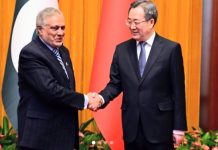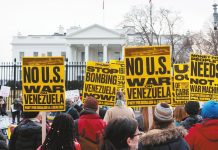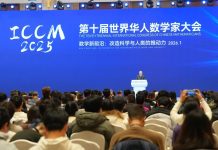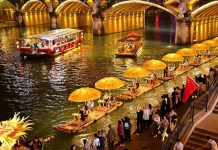
Hou Xiaolei, a professor at the School of Architecture of the Central Academy of Fine Arts in Beijing, has found an innovative way of bringing new life to the hutongs, the city’s ancient alleyways. Since 2015, she has led a microgarden project to build tiny gardens in hutongs, usually along the sides of the narrow alleys.
The project was carried out as Beijing’s urban renewal entered a phase where massive demolition and reconstruction gave way to small-scale “regeneration” projects.
“We hope to bring art into ordinary people’s lives through the project and upgrade the public spaces of Beijing’s old city, increase residents’ participation in community governance and contribute to the improvement of the city’s environment and culture,” Hou told Beijing Review. Along one section of Chongyong Street, a historically significant thoroughfare in central Beijing, Hou and her team have built 35 microgardens consisting of more than 6,000 plants.
In addition to plants, the gardens also have art installations featuring elements of Beijing’s local culture such as kites and tanghulu, a traditional candied fruit snack.
Hou told Beijing Review the microgardens have not only increased the greenery of the old street but also provided leisure spaces.
Hutong alleyways crisscross downtown Beijing. Building on the success of the project, Hou and her team continue to promote microgardens and engage local residents in creating and caring for them.
Hou’s team has set up gardening organizations in some residential communities to teach local residents how to garden. They have also distributed brochures on microgardens, packages of seeds and tools to residents, encouraging them to grow their own ones.
Hou said the project is an innovative way to revive the old hutongs with creative horticulture and will contribute to the overall protection of Beijing’s old city, which has one of the world’s most remarkable collections of palaces, temples, squares, markets, streets, city walls and towers, built over the course of China’s last three imperial dynasties. This project reflects the increasing importance attached to cultural heritage protection in recent years.

Preserving traditional culture
The central authorities have attached greater importance to cultural inheritance and development since Xi Jinping took helm as general secretary of the Central Committee of the Communist Party of China (CPC) in 2012.
The first guidelines of the central authorities on preserving and developing outstanding traditional culture were released in January 2017.
In April 2021, China unveiled cultural initiatives for the 14th Five-Year Plan (2021-25) period that were key parts of national strategies to carry on cultural traditions. The dynamic, open-ended list of initiatives includes a project to identify and categorize cultural resources, as well as projects for the protection and promotion of Yellow River culture and traditional Chinese medicine.
Under the project to identify cultural resources, a tiered system of intangible cultural heritage has been established, spanning the national, provincial, municipal and county levels.
More than 100,000 items of intangible cultural heritage have been registered in the system, including 1,372 at the national level. More than 3,000 individuals have been identified as representative inheritors of intangible cultural heritage.
Innovative efforts have been made to not just inherit but also develop traditional culture. Traditional Chinese culture has revealed its abiding charm and taken on new appeal in China in recent years. The protection of thangka art, a traditional Tibetan painting on cotton or silk with at least 1,500 years of history, represents one of the endeavors to rescue and protect cultural heritage in China. Thangkas are popular among ethnic groups who believe in Tibetan Buddhism, such as Tibetans, Mongolians and the Qiang, and who reside in regions such as Tibet Autonomous Region, Inner Mongolia Autonomous Region, Qinghai, Gansu, Sichuan and Yunnan provinces. It’s an important way to portray and spread Tibetan Buddhism and reflects the spiritual and social life of Tibetans. However, years ago, the art form was in urgent need of protection as fewer artists were learning the skills to produce it, some works of high artistic and historical value were being sold abroad illegally and such works in some temples were damaged due to a lack of protection awareness.
In 2013, the Chinese Folk Literature and Art Association (CFLAA) launched the Chinese Thangka Culture Archive project to undertake a field study into the history and artistic characteristics of the art form and record the results through written documentation, audio recording, photography and videography.
Under the project, Feng Li, Executive Editor of the bimonthly Folk Culture Forum magazine affiliated with the CFLAA, has led a team to carry out surveys on thangka art in Tibet, Qinghai, Sichuan and Yunnan. She told Beijing Review that as of December 2020, the project had finished surveys in places including Tibet’s Lhasa, Chamdo and Xigaze, and Qinghai’s Huangnan Tibetan Autonomous Prefecture and Yushu Tibetan Autonomous Prefecture, having collected more than 10 million characters of written documents and taken more than 50,000 photos. These findings will help protect, study and spread thangka culture.
Chinese people’s identification with and confidence in their own culture have improved in recent years and traditional culture is thriving through innovation. Many traditional culture-related TV programs and products are attracting strong followings. One of these is cultural TV program National Treasure, produced by state broadcaster China Central Television. National Treasure was launched in 2017 and tells the stories and history behind Chinese cultural relics from its national key museums such as the Palace Museum inside the Forbidden City in Beijing.
Creative cultural products produced and sold by museums have also surged in popularity, with their sales constantly breaking new records. For instance, in recent years, important archaeological discoveries from the Sanxingdui Ruins site in Guanghan, southwest China’s Sichuan Province, have driven the design and sale of products by the site’s museum. According to the museum, sales of its creative cultural products reached 20 million yuan ($2.8 million) last year and 15 million yuan ($2.1 million) in the first quarter of this year.
Young Chinese consumers have an increasing preference for products that not only are infused with traditional cultural elements but also cater to modern tastes. Under the trend known as guochao, which means “native wave,” fashionable products of all kinds have been created.
The guochao trend is gaining popularity among Gen Z, according to a report released by the JD Consumption and Industry Development Research Institute in April last year.
Gao Peng, an associate professor of the School of Art Design at Communication University of Shanxi, told Economic Daily that in recent years, as the government has attached more importance to preserving and passing down traditional culture, young consumers have taken more pride in traditional culture, which is why sales of guochao products have surged.
Building up cultural strength
President Xi Jinping underlined the need to firm up the Chinese people’s confidence in their history and culture at a symposium on cultural inheritance and development on June 2.
Xi emphasized that the Chinese civilization has a long and continuous history, and said that a comprehensive and profound understanding of that history is essential to more effectively promote the creative transformation and development of outstanding traditional Chinese culture.
“These five prominent features point the way forward for the advancement of the modern Chinese civilization,” Wang Bo, Vice President of Peking University, told Xinhua News Agency.
Days after the symposium, the First Forum on Building Up China’s Cultural Strength took place in Shenzhen, Guangdong Province on June 7-8. The forum, hosted by the Publicity Department of the CPC Central Committee, had the theme of Toward Greater Cultural Confidence and Mutual Learning Among Civilizations. Officials, scholars and representatives from enterprises and public institutions in the cultural sector attended the forum and offered their ideas on how to build up China’s cultural strength.
Eight sub-forums discussed topics including cultural heritage protection and art and literature development.
At the sub-forum on cultural heritage protection, Wang Wei, Director of the Chinese Academy of Social Sciences Academic Division of History, outlined the achievements of a project tracing the origins of Chinese civilization, launched in the early 2000s. He is one of the project’s chief experts.
The project is a multidisciplinary scientific research project supported by the state. About 400 experts, majoring in nearly 20 disciplines, from more than 70 research and development institutions in China and abroad have participated in the project. It is the largest-scale comprehensive research project on ancient civilization, as well as the one with the most disciplines and scientific technology involved ever undertaken in China.
The new archaeological discoveries made under the project have provided valuable new insights that further demonstrate how the Chinese civilization has more than 5,000 years of history.
“The large number of archaeological discoveries demonstrate the continuity of the Chinese civilization and show its richness,” Wang Wei said.
And because of that continuity, this civilization reflects the continuous process of human social development to some extent, he said.
At the forum, Wang Xudong, Director of the Palace Museum inside Beijing’s Forbidden City, China’s former imperial palace from 1420 to 1911, emphasized the importance of preserving cultural heritage in building up cultural strength.
He said cultural heritage is nonrenewable and cannot be replaced, and stressed that protecting cultural heritage is preserving the spiritual roots of the Chinese nation.
Developing a modern civilization
Scholars also expressed their ideas on the relationship between Chinese civilization and modernization at the forum.
Chen Lai, Director of the Tsinghua Academy of Chinese Learning, said at the forum that China’s great achievements since the country’s reform and opening up in the late 1970s are closely related to traditional Chinese culture.
Chen said some outside China consider the concepts of Confucian culture and modernization to be contradictory, but that’s not true. The rapid economic growth of Japan and the “Four Asian Tigers”—China’s Hong Kong and Taiwan, Singapore and the Republic of Korea—since the 1950s showed that Confucianism and modernization are not contradictory.
The ethics of contemporary Chinese economic activities such as hard work, economy, honesty and a willingness to learn are all typical of Confucian culture. Therefore China’s rapid economic growth in the past decades should be attributed not only to Chinese people’s hard work and creativity but also to traditional Chinese culture.
Zheng Yongnian, a researcher with the Chinese University of Hong Kong (Shenzhen), said although modernity as a set of values was formed in the West from the Renaissance to the Age of Enlightenment, this does not mean that the set of values belongs solely to the West. In fact, the West has also absorbed and incorporated many values and technology from other civilizations and cultures, particularly the Chinese civilization and culture. For instance, the West’s application of China’s technological inventions, especially the four great inventions—the compass, printing, papermaking and gun powder—laid a solid foundation for its modernization.
China’s modernization is very different from that of other countries, as its modernization is based on its own traditions and circumstances, rather than the models of the West.
It is the pluralism of modernization that should be respected today. Different civilizations not only have different understandings of the meaning of modernization, but also different ways of pursuing modernization. Only when a country’s modernization conforms to its own civilization, culture and national conditions can it succeed.
China’s emphasis on pursuing its own path to modernization means that it will not impose its model of modernization upon other parties, as some Western countries do. Instead, it advocates dialogue and mutual learning among civilizations to jointly advance the modernization of the world by seeking common development along different paths. –The Daily Mail-Beijing Review news exchange item





